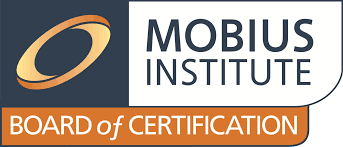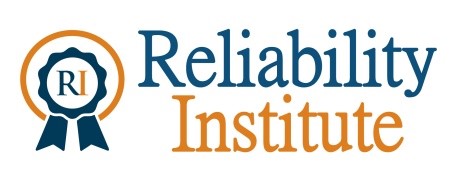MS300 Asset Reliability Practitioner [ARP-E] Reliability Engineer
The Asset Reliability Practitioner [ARP-E] "Reliability Engineer" course is intended for industrial reliability engineers charged with helping the organisation improve reliability and performance, and for anyone else in the organisation who desires to have an in-depth knowledge of the reliability and performance improvement process.
Description
Introduction
• Goals of the course
• Goals of reliability improvement
• How reliability/performance improvement is aligned with asset management, operational excellence, TPM, and lean
- An introduction to ISO 55000
• The role of the reliability engineer
- Making improvements
- Providing data and recommendations
- Supporting the Category III Program Leader
Strategy and implementation
• Benefits of reliability and performance improvement
- Aligning the program to meet the business goals
• The need for the business case
- How to provide data to support the business case
• How to assist in the development of the “roadmap”plan
- What are the “essential elements” of a holistic approach
- How do you break out of the reactive maintenance cycle
• Understanding the maintenance strategies
- Reactive maintenance
- Strategic maintenance in summary
• Run-to-fail
• Condition-based maintenance[CBM]
• Interval-based (preventive)maintenance
• Hidden-failure finding tasks
People management
• Culture change
• Helping to gain and retain senior management support
• Engaging people in the reliability and performance improvement effort
- Training and certification
- Skills development
- Awareness sessions
• Human error and psychology
- Why errors are made
- Why knowledge and observations about failure may be flawed
• Steering committee
- The role of the RE with the steering committee
Defect elimination
• Overview
• Design for reliability
• Procurement for the lowest lifecycle costs
• Transportation for minimal degradation
• Managing outside contractors
• Managing vendors
• Acceptance testing
• Work management - introduction
• Spares management/caring for spares
• Precision and proactive maintenance – introduction
• Precision operation and operator driven reliability [ODR]
Reliability engineering
• Reliability fundamentals
• Understanding equipment “failure patterns”
- Does all equipment wear out with age?
- What are “random failures”
- Early age “infant mortality” failures
- Nolan and Heap and other studies
- Understanding failure modes
- Understanding failure consequences
- Understanding hidden-failures
- Collecting failure data to aid PMO, RCM,FMECA, Pareto analysis and RBDs
• Develop meaningful, useful, usable failure codes
- Determining the reliability of an item
• Strengths and weakness of MTBF
- The basic principles and pros/cons of CM and CBM
- The basic principles and pros/cons of interval-based (preventive) maintenance
• Analysing reliability data
- Weibull and other analysis techniques
• Reliability block diagrams [RBD]
- An introduction to constructing RBDs
- Estimating system reliability and availability based on RBDs
• Lifecycle cost analysis [LCCA]
- The principle of lifecycle costs versus purchase price
- An introduction to LCAA
Asset strategy development
• Getting the house in order
- Developing the master asset list [MAL] aka asset register [AR]
• Utilising ISO 14224 to define the hierarchy
- Developing the Bill of Materials [BOM]
• The importance of having an accurate BOM
• Developing an asset criticality ranking [ACR]
- The importance of having an ACR
- Understanding criticality
- A methodology to develop the ACR
- Prioritising maintenance, reliability, and other decisions based on criticality
• Utilising Preventive Maintenance Optimisation[PMO]
- What is PMO
- Assessing existing PMs and either keep them, improve them, or remove them
- The strengths and weakness of PMO
• Utilising Failure Modes, Effects and Criticality Analysis [FMECA]
- How the process may be used in asset strategy develop
- The overlap between FMECA and RCM
• Utilising Reliability Centred Maintenance [RCM]
- What is “classic” RCM
- Understanding the seven key elements of the RCM process according to SAE JA1011
- How to prioritise the RCM process
- The logical process to establish the mix of the following outcomes on each asset
• Run-to-fail [RTF]
• Condition-Based Maintenance[CBM]
• Interval-based Maintenance[IBM] or Preventive Maintenance[PM]
• Hidden-failure finding task[HFFT]
• Redesign for improved reliability or performance
• Utilising Pareto analysis
- What is Pareto analysis
- How to collect accurate, reliable failure data
- Analysing the data
- Utilising Pareto analysis to prioritize maintenance and reliability decisions
Work and spares management
• An overview of work management and spares management and how they are connected
- How they relate to preventive work, condition-based work, work requests, and break-in work
- How they relate to shut downs/turnarounds/outages
- The benefits of work and spares management and key benchmarks
- Key components
• Handling maintenance requests via observations and CM
• Spares management
• Managing preventive tasks (PMs,CM tasks, proactive tasks)
• Scheduling
• Managing break-in work
- Reporting, and KPIs to collect and trend
- Ensuring there is feedback for continuous improvement
• MRO spares and material management
- The consequences of a poor MRO spares management
- Spares policy identification
- The definition of a “critical spare”
- Spares sourcing
- Inventory control
- Spares issuance
- Documentation and analysis
• Maintenance planning
- Creating a job plan
- Allocating people to work
- Determining time, tools, skills, equipment,and safety requirements
- Job kitting
• Maintenance scheduling
- How to prioritise jobs
- Coordinating with production
• Managing break-in work
• Shutdowns, turnarounds, and outages
- Scope, time, quality, communications,human resources (site and contractor),and risk management
• The computerised maintenance management system [CMMS] or enterprise asset management[EAM] system
- Information and data that should be managed
- The link with work and spares/material management
- Failure codes
Precision skills (precision and proactive maintenance)
• What is precision and the importance of precision work
- A detailed introduction to:
• Precision shaft and belt alignment
• Precision soft foot correction
• Precision mechanical and electrical fastening
• Precision balancing and balancing tolerances/standards,and
• Other common mechanical and electrical tasks
- The importance of developing and following written procedures
- The importance of precision installation in components such as bearings (rolling element and journal/sleeve), seals, gears,belts, pumps, electrical equipment, and other equipment
- Understand the key operating principles of rolling element and journal bearings,seals, gears, pumps, fans, transformers,steam traps, and valves
- Understand how to verify electrical systems: fault current, earth loop,impedance, insulation resistance, and protection testing
- Understand the issues related to power quality: earth loops, power factor,harmonics, EN60130
• Understand mechanical and acoustic resonance and the basic correction techniques
• Proactive maintenance
- The importance of taking proactive steps to avoid future problems
- A detailed introduction to:
• Precision lubrication (oil and grease) including selection,receipt, filtering, storage, issue,and replenishment and the effect these have on contamination
• Resonance correction
• Power quality control, and
• Keeping equipment and workplaces clean and organised
• The importance of commissioning
- Safety practices and preparation
- The importance of following the correct start-up procedures
- Calibration
Condition monitoring
• Overview of CM principles for mechanical and electrical equipment
• The relationship between CM and planning/scheduling and operations
• A detailed introduction of the technology and application of:
- Vibration analysis
- Ultrasound
- Oil analysis
- Wear particle analysis
- Electric motor testing
- Infrared analysis
- Electrical equipment and insulation testing
- Transformer testing
- Partial discharge
- Non Destructive Testing [NDT]
- Process/performance monitoring
- Visual inspections
• The future of CM and predictive analytics
Continuous improvement
• The principle of and importance of continuous improvement, Kaizen, PDCA, and Lean
• The need to reassess business conditions and what is critical
• Utilising metrics to measure and improve performance
- Benchmarking against industry and the facilities “best day”
- The importance of establishing the right KPIs
- Suggested metrics and KPIs and the most effective use of KPIs
- The importance of accurate data collection
• The importance of constant communication
• Root cause (failure) analysis [RCA and RCFA]
- The importance of conducting RCA/RCFA
- The importance of making the improvements
- How to perform RCA/RCFA
• Determining when it is justified to perform RCA/RCFA and selecting the appropriate process
• A review of 5-whys, fault-tree, Ishikawa, and other techniques
• A systematic approach to determining the root cause(s),determining the solution(s),selecting the best solution,implementing the solution, and verifying the solution – all in a cost justified manner
• The need for on-going education, skills, and awareness Training
Recommended Pre-Study
On-line videos of the course are available to students to allow for study prior to attending classroom course and exam.
Get Certified!

1. Prerequisite of a minimum of 6 month’s verified work experience
2. Completing the whole course either in a classroom or Distance Learning
3. Passing the exam with a minimum of 70%
The ARP course structure is modelled on the ISO 18436 standards with topics mapped to ISO 55000. The optional Certification Exam is provided by Mobius Institute Board of Certification, (MIBoC) which is ISO/IEC 17024 accredited. Students who meet the experience requirements, complete the course and pass the examination will become certified the highest recognised certification in Reliability available anywhere
Training Partner
SKF delivers the training in collaboration with the Reliability Institute of Australia.

Key Learning Outcomes
-
A Model Plan for developing Reliability Improvement
-
Addressing People Management and Culture issues
-
Asset Criticality Analysis and RCM /FMECA analysis
-
Developing an Asset Management Strategy
-
Reliability Engineering Techniques and Analytical Tools
-
RCFA/RCA Techniques
-
Defect Elimination and Pro-active maintenance activities
-
Precision Installation & Maintenance
-
Condition Monitoring Techniques and their applications
-
Sustaining and Continuing Improvements